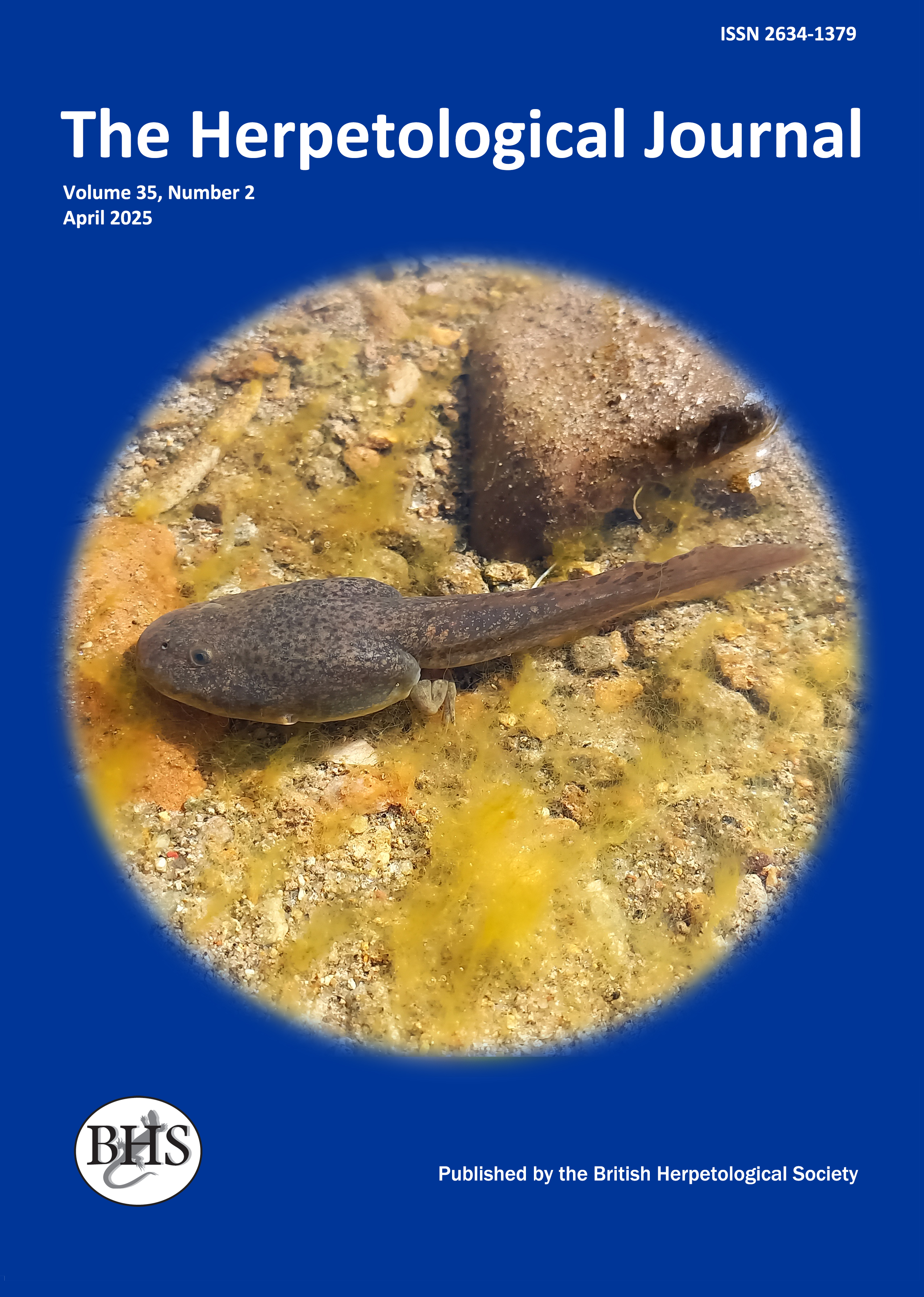
The Herpetological Journal
The Herpetological Journal is the Society's prestigious quarterly scientific journal. Articles are listed in Biological Abstracts, Current Awareness in Biological Sciences,Current Contents, Science Citation Index, and Zoological Record.
ISSN 0268-0130
2021 Impact Factor from Clarivate for the Herpetological Journal is 1.194, an increase of 0.332 from 2020.
pdf 03.Egg retention in wild-caught Python bivittatus in the Greater Everglades Ecosystem, Florida, USA
1245 downloads
Open Access
DOI: https://doi.org/10.33256/32.3.109113
pp. 109-113
Authors: Gretchen E. Anderson, Frank N. Ridgley, Jillian M. Josimovich, Robert N. Reed, Bryan G. Falk, Amy A. Yackel Adams & Andrea F. Currylow
Abstract: Retention of eggs in oviducts beyond the normal oviposition period is a common problem for captive reptiles, but the occurrence of egg retention in wild populations is largely unknown. The Burmese python (Python [molurus] bivittatus; Kühl 1820) is an oviparous snake native to south-eastern Asia that is now established in southern Florida. From 2011–2019, invasive Burmese pythons were opportunistically removed from Everglades National Park and Big Cypress National Preserve, humanely euthanised, and necropsied to determine reproductive condition. A total of 258 females of reproductive size were found to exhibit various stages of oviposition which generally aligned with purported annual reproductive timing. However, we encountered five pythons during the post-ovulatory period (Aug–Feb) showing signs of recent oviposition with retained eggs. Most of these cases comprised a small number of retained eggs, likely representing some portion of the total clutch. Because this condition is nearly absent in wild animal literature, our observations suggest retained eggs in wild snakes may be more common than previously assumed, possibly slowing or otherwise impacting population growth. However, we recognise that for an invasive species like the Burmese python in Florida, the egg retention rate may be higher in the non-native range compared to the native range due to maladaptation to novel habitats or environmental conditions. Additional research is needed to determine the exact causes of egg retention and investigate the implications for population dynamics on this and other snake species.
Keywords: invasive species, dystocia, snakes, Burmese, reproduction

